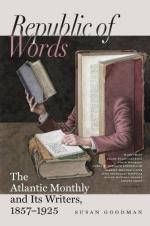Los Angeles is at present the largest wine-growing county in the State, and Sonoma the second. Many other portions of the State, however, are fast becoming planted with vineyards, and some of them are already giving promise of furnishing superb wines. As usual in wine-growing countries, in the southern part of the State the wines are richer in saccharine properties, and heavier-bodied, than those of the more northern sections, but are deficient in flavor and bouquet. We shall get a lighter and tarter wine from the Sonoma and other northern vineyards, which will please many tastes better than the southern wines. The two largest vineyards in the State are owned by Colonel Haraszthy, of Sonoma, and John Rains, of San Gabriel. The former has two hundred and ninety thousand vines, and the latter one hundred and sixty-five thousand. It is probable that from one of these vineyards at least will come a good Champagne wine.
A large tract of land, to which has been given the name of “Anaheim,” has been recently purchased by a German company. It is sold to actual settlers in lots of twenty acres, affording room for twenty thousand vines. There are now planted nearly three hundred thousand, which are in a very flourishing condition. The wines from this district will soon be in the market.
The wines now made in California are known under the following names: “White” or “Hock” Wine, “Angelica,” “Port,” “Muscatel,” “Sparkling California,” and “Piquet.” The character of the first-named wine is much like that of the Rhine wines of Germany. It is not unlike the Capri bianco of Naples, or the white wines of the South of France. It is richer and fuller-bodied than the German wines, without the tartness which is strongly developed in nearly all the Rhenish varieties. It is a fine wine, and meets the approval of many of our best connoisseurs. Specimens of it have been sent to some of the wine-districts of Germany, and the most flattering expressions in its favor have come from the Rhine. The “Angelica” and “Muscatel” are both naturally sweet, intended as dessert-wines, and to suit the taste of those who do not like a dry wine. They are both of a most excellent quality, and are very popular. The “Port” is a rich, deep-colored, high-flavored wine, not unlike the Burgundies of France, yet not so dry. The “Sparkling California” and “Piquet” are as yet but little known. The latter is made from the lees of the grape, is a sour, very light wine, and not suitable for shipment. Messrs. Sainsivain Brothers have up to the present time been the principal house engaged in the manufacture of Champagne. So far, they have not been particularly successful. This wine has a certain bitter taste, which is not agreeable; yet it is a much better wine than some kinds of the foreign article sold in our markets. The makers are still experimenting, and will, no doubt, improve. It is probable that most of the good sparkling wine which we shall get




